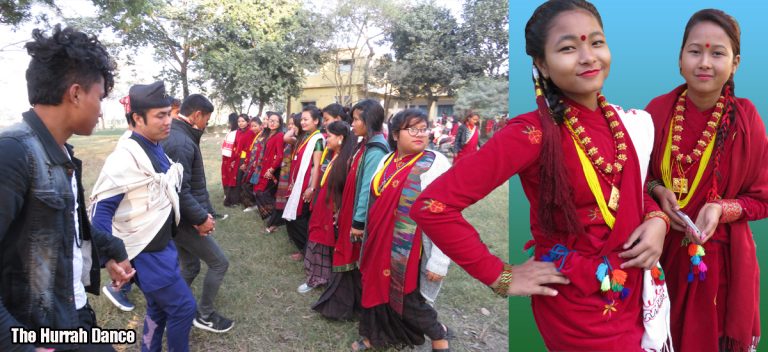
Nepal is a small country in the southern Himalayas, situated between India and China. It is home to over 300 ethnic groups that speak a range of languages and belong to a diverse set of religious beliefs. Magars are one of the Nepal’s 59 indigenous peoples, each of whom has their own language, culture, rituals, and history, as defined by the government. Their settlements extend from the western and southern reaches of the Dhaulagiri Himalayan range to the Gandaki River basin in the east.According to the 2011 Census, the Magar ethnic/caste group is Nepal’s third biggest ethnic/caste group, accounting for 1,887,733 people, or 7.1 percent of the country’s total population. The Magars are separated into many groups, such as the Thapa, Ale, Rana, Budhathoki, Roka, Gharti, Pulami, Darlami, Pithakote, Khapangi and Pun, to mention a few, and they typically describe themselves as belonging to one of these tribal groups through descent from a common ancestor.
Magar’s religion and culture are at a point of controversy, as they are supporters of both Hinduism and Buddhism. Most Magars worship the same gods and goddesses as Hindus and celebrate the same festivals. The majority of Magars adhere to Khas-Bahun religious traditions, celebrate the same festivals practically identically, and employ Bahun priests. They do, however, follow a variety of tribal rites and rites, including a festival for worshiping clan deities and the use of a Lama to execute life cycle rites in place of a Brahmin priest.Nature, idols, spirits, and supernatural creatures are all worshipped by the Magars. Similarly, they worship hunting gods and goddesses both inside and beyond their families, as well as deceased ancestors’ gods or their grandmothers and grandfathers. They have their own unique form of worship.They bury their dead bodies and have their own set of beliefs about life after death. They consider themselves to be animists or worshipers of nature, depending on their religion system. They practice Shamanism, and their Dhami is known as Dangar, while their Jhakri is known as Rama. Bhusal, the traditional spiritual and social leader of Magar, used to be a powerful figure in the early days.
Magars celebrate a variety of festivals in their own unique ways. Maghe Sangkranti is the most well-known Magar festival (falls in every 1st of Magh). Bhume Parba (falls in Asar), Dasain and Tihar (Hindu’s primary holiday), Chaite Dhasain, Saune Sankranti, and other festivals are celebrated by the Magar people at different times of the year. The Magar tribes also sing and dance in their own ways. Some of examples of their forms of dances and songs are Kaura, Salaijo, Ghantu, Sorathi, Bhumya, Hurra, Painsyaru, Jhyaure (Jhyabhura), Jhora (Jora), Yanimaya, Sunimaya, Nanilai, Nirmaya, Thadobhaka, Laskebhaka, AsareBhaka, Jibaimama, JyanaiOhali, Nautunebhaka, Gopichan, SisnoKhosne, Jorasyai, BhusPolne, Sarang, Tappa, etc.
Magars speak a variety of mother languages, including Khm, Kaike, and Dhut. The Tibeto-Burman linguistic family encompasses all three of these languages. Magars speak Kham dialect in AtharaMagarat in the Mid-Western area, Tarali or Kaike in Dolpa district in the North-Western area, and Dhut language in BarahMagarat in the West and Central parts of Nepal.Agriculture is typically the backbone of the Magar economy in all locations; some are subsistence farmers who raise sheep and goats, while others work as craftspeople or are skilled in bamboo work. However, many Magars who work in dry-crop farming and buffalo-raising have made a reputation for themselves by joining British and Indian security services.Their homes are constructed in the style of the communities in which they reside, a style that changes from one location to the next. The two-story stone home with thatch or, in certain situations, slate roofing is the most traditional. Many of the smaller buildings in western villages have a circular oval form and are painted with ochre or reddish mud.
The special bond between maternal uncles and their nephews is the most distinguishing feature of the Magar family connection. They treat each other with mutual respect since the nephew’s wife will be picked from among his uncle’s daughters when he is ready to marry.Among any other cultural groups, it is said to be known that the Magar tribes are straightforward, honest, courageous, and kind by nature.
-Article written by: Saru Niraula for Land Nepal